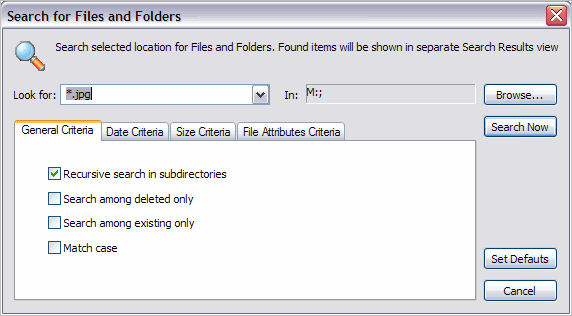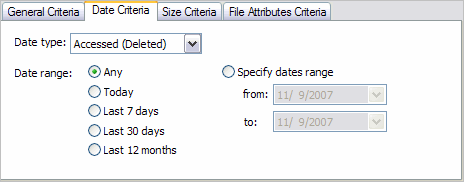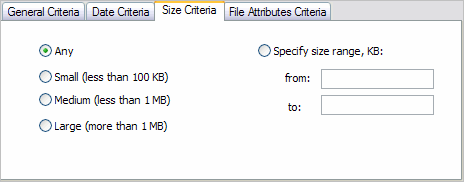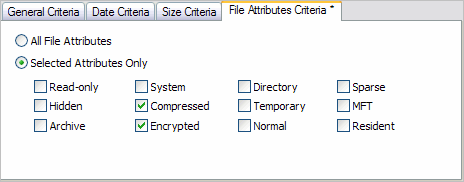Active@ UNDELETE ver. 7x
See documentation for latest version
Search for files and folders
To help you find deleted files in a long list of files from a scanned drive, you may search the list with specific search criteria and review results in a Search Results View.
To search a scanned drive for deleted Files and Folders:
- Select a scanned Logical Drive or scanned Detected Partition.
- To open the Search for Files and Folders dialog box, do one of the following:
- From the main toolbar, click Search.
- Right-click the selected item and click Search from the context menu.

- In the Look for field, enter the text, along with wildcard symbols or regular expressions, for which you intend to search.
- The search path appears in the In field. To change the search path, click Browse… and select the drive.
- To set options in the General Criteria tab:
- To search the root level of the drive and all sub folders, select the Recursive search in subdirectories check box. To search only the root folder, clear this check box.
- To display only files that are deleted or damaged, select the Search among deleted only check box.
- To display only files that are not deleted, select the Search among existing only check box.
- To display files that match upper and lower case letters in the Look for field, select the Match case check box.
- To display files by a specified date, in the Date Criteria tab, in the Date Type drop-down list, choose a type and select a date range.

- To display files by a specified file size, in the Size Criteria tab, select Small, Medium or Large, or specify the size range in KB.

- To display files based on file attributes, in the File Attributes Criteria tab, click Selected Attributes Only and select the check box next to all attributes that you want to search for.

- To change all settings back to default settings, click Set Defaults.
- Click Search Now. The Processing… dialog box appears.
- To display disk image events and progress details, click Details.
- To terminate the disk image process, click Stop at any time. Results may be not accurate or complete.
- After the search is complete, a Search Results view appears.
You may repeat a search many times and refine the search criteria for better results.



